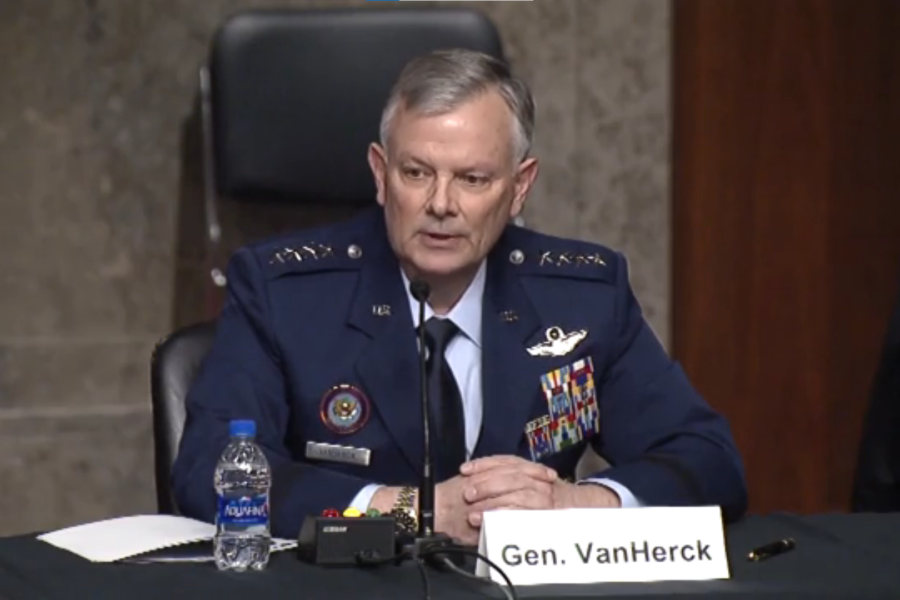The U.S. military has repeatedly touted the growing importance of the Arctic region, but U.S. Northern Command boss Gen. Glen D. VanHerck told Senators that’s not really represented in the Defense Department’s 2022 budget request.
Questioned by Sen. Dan Sullivan (R-Alaska) on how the different service branches would be able to implement their Arctic strategies with the resources provided in the 2022 budget, VanHerck seemed to agree with Sullivan’s assessment that the region didn’t get much focus in the budget.
“Senator, I think when I look at the FY22 budget, I see an inching along in all of the services. I’m encouraged, they all have strategies now, and the department has a strategy, and my strategy heavily relies on the Arctic,” VanHerck said. “But we didn’t move the ball very far down the field this year in the budget with regards to resources in the Arctic.”
As commander of NORTHCOM, VanHerck oversaw the release of a new strategy in March that singled out the Arctic as a competitive area, as the melting ice cap, natural resources, and shipping lanes are all contested by the U.S., Russia, and even China, among other nations.
NORTHCOM’s strategy called for developing strategic partnerships in the region as well as “enhancing Arctic operations, capabilities, infrastructure, and ensuring a credible defense presence.”
And as VanHerck said, NORTHCOM wasn’t the only one to release a strategy for the region. In the last year, the Army, Navy, Marine Corps, and Air and Space Forces have all released strategic plans for the Arctic, some for the very first time. Defense Secretary Lloyd J. Austin III said during his confirmation hearing that he recognized the growing competition in the area and pledged to coordinate on strategy.
Indeed, on the same day VanHerck was speaking to the Senate panel, DOD and Austin announced the formation of the Ted Stevens Center for Arctic Security Studies, an academic research and training venue to work with allies on cooperation in the region.
The Defense Department’s 2022 budget overview says the agency will have “funding to prepare for contingencies associated with a changing climate, including investments to prepare for an opening Arctic and increased peer competition in that region.”
And each service’s justification data does explicitly cite the Arctic in some way. The Space Force budget includes more than $127 million in funding for the Polar MILSATCOM system, which will provide secure, jam-resistant, strategic and tactical communications in the Polar region. The Air Force, on the other hand, requested some $14 million in procurement for radio equipment that will, among other things, help with Arctic command and control. As for the Army, there are tens of millions of dollars devoted to research, development, test, and evaluation of gear and systems in Arctic conditions, and the Navy also requested some $15 million in RDT&E for the Arctic Mobile Observing System and the Submarine Arctic Warfare Development Project.
Overall, the Pentagon has requested $715 billion in its 2022 budget.
